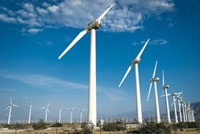Advertisement
Grab your lab coat. Let's get started
Welcome!
Welcome!
Create an account below to get 6 C&EN articles per month, receive newsletters and more - all free.
It seems this is your first time logging in online. Please enter the following information to continue.
As an ACS member you automatically get access to this site. All we need is few more details to create your reading experience.
Not you? Sign in with a different account.
Not you? Sign in with a different account.
ERROR 1
ERROR 1
ERROR 2
ERROR 2
ERROR 2
ERROR 2
ERROR 2
Password and Confirm password must match.
If you have an ACS member number, please enter it here so we can link this account to your membership. (optional)
ERROR 2
ACS values your privacy. By submitting your information, you are gaining access to C&EN and subscribing to our weekly newsletter. We use the information you provide to make your reading experience better, and we will never sell your data to third party members.
Environment
Pittsburgh’s History Suggests Cutting CO2 Requires Big Changes
Climate Change: Only modest drops in emissions accompanied departure of people and steel industry
by Catherine M. Cooney
April 5, 2012

Over 100 cities and counties in the U.S. have developed climate action plans to reduce greenhouse gas emissions. But many environmental researchers question whether these programs will succeed. Now an analysis of carbon dioxide emissions and energy use from 1900 to 2000 in Allegheny County, Pa., suggests that local strategies will need to take more drastic steps to avoid missing their marks (Environ. Sci. Technol., DOI: 10.1021/es203943q).
Across the country, most local climate action plans set a goal of cutting 1% of greenhouse gas emissions per year. To meet that goal, the plans call for changes in a communities’ energy use, such as developing more-efficient public transportation or reducing building energy needs through green roofs.
Rachel Hoesly of Carnegie Mellon University and her colleagues wanted to understand how a county could significantly reduce emissions. The team used Allegheny County as a case study because of the major socioeconomic changes it has undergone. The area, which includes the city of Pittsburgh, grew though the mid-1900s to become the nation’s steel production powerhouse, the authors write. But in the past few decades, the county lost 40% of its heavy industry and 25% of its population.
The researchers wanted to determine how those population and economic changes affected CO2 emissions in the county. So they created a historical record of energy use for each decade between 1900 and 2000. They looked at four sectors of the region’s economy: residential, commercial, transportation, and industrial. Drawing on multiple data sets related to energy usage in each sector, the researchers calculated the total energy used in each decade. Based on these estimates, they calculated the related CO2 emissions.
They found that the county’s emissions dropped by about 1% per year from 1970 to 2000. As a result, per capita emissions in 2000 were nearly the same as they were in 1940, when the carbon-intensive metals manufacturing industry reached its peak, the researchers report.
Although those countywide emissions drops approximate those called for by recent climate plans, the researchers point out that the Pittsburgh region underwent dramatic changes during that period, far greater than anything outlined in the plans. City managers today may need to rethink their plans, the researchers conclude, to reach their emissions goals. They suggest that local planners may need not only greater funding, but also more-rigorous engineering and economic analyses so they have a more accurate picture of how to meet their emissions goals, says coauthor Michael Blackhurst, now at the University of Texas, Austin.
Stephen Hammer, an urban studies and planning researcher at Massachusetts Institute of Technology, applauds the study and agrees with its conclusions. “Historical research that gives policymakers a longer-term perspective into what it might take to change their local carbon trajectory will always be helpful,” he says.





Join the conversation
Contact the reporter
Submit a Letter to the Editor for publication
Engage with us on Twitter